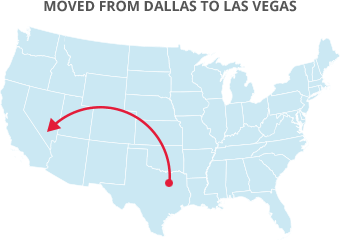


Packing and purging go in concert--while you're purging, you need to be packing, too. If you're overseeing your move yourself, you're responsible for accumulating all the packing materials that are needed. Your local big-box store, self-storage company or the mover you've hired are all excellent resources for your materials. If you obtain from your mover, ask if you can return any unopened or unused boxes, tape, bubble wrap, or paper.
Here is a checklist to get you started:
Small boxes for books, heavy items, toys, appliances, fragile items
Medium boxes for the kitchen, accessories, lampshades, linens, shoes and boots
Large boxes for lamps, window treatments, pillows--items that are bulky but lightweight
Packing tape and tape guns
Newsprint, bubble wrap, packing peanuts or your shredded paper
Markers and labels
Small tools--screwdrivers, hammer, box cutter, scissors
Camera or smartphone
For a more all-encompassing list of tools to make your move easier, click here.
Getting Started
Last utilized, last packed is the rule for the boxing process—usually, the coffeepot and microwave are the last things to be packed in boxes. Since you're boxing in unison as you purge, start with the low-hanging fruit in chests and cabinets; you can knock out one or two of those in an hour. When you've gathered enough for a donation or trash run, don't leave home until your packed boxes are taped and labelled. You can use distinguishing color-coded labels (blue for the kitchen, green for the master, etc.) or use masking tape with a heavy black marker; just be sure you label every side of the box and note if it is fragile. A couple of moments spent listing the contents are worth their weight in gold later when you cannot find your shoes in all the boxes marked "master closet".
Organization
Purging assists with organization, and so does cleaning out the closets, attic, and garage at the beginning of the process. You'll want to designate a storage location for all your packed boxes, and the garage is the preferred site as it's going to be close to the moving truck. Alas, the garage must be organized for this to work, so get to work on the garage project early on—carve out at least a couple days for the garage purge. Once you've got the space cleared, sort your boxes so that the movers can get to them without issue on moving day; they will load the truck so that the weight is properly distributed and so that the first boxes that you need at the destination are the last put on.
If you are the kind of person who keeps original packaging, you may now congratulate yourself. Electronics are fragile and if you have the original wrap, you can re-use it. If not, put everything connected to the device in a box--power cords, modems, power strips, instructional CDS--and label it all. Take photos of the cords before you pack them so that you can refer to the photos when you are hooking everything back up.
Fragile!
It's astonishing how many things you use every day are very breakable. Dishware, glasses, light bulbs, lamps--all need a little TLC when you're packing them. Wrap dishes and glasses in newsprint, and place the plates in the box on end like records. A layer of bubble wrap protects them more, and stuff the empty spaces with some sort of shredded paper or packing peanuts. Don't pack too much in the boxes of fragile items, and don't use oversize boxes for delicate things. Boxes from the liquor store work wonderfully for fragile things; they come in odd sizes and may not have tops, so with a box cutter and tape you can customize boxes.
Don't just toss your lamps into boxes, unscrew the shade and harp and take out the bulb. The bases can be placed in a large box with the harp taped to the base, the shades can nest in a different box, and the bulbs need to be packed separately (an ornament box is great for this) and marked fragile.
Next time, we will look at packing dos and don'ts.

